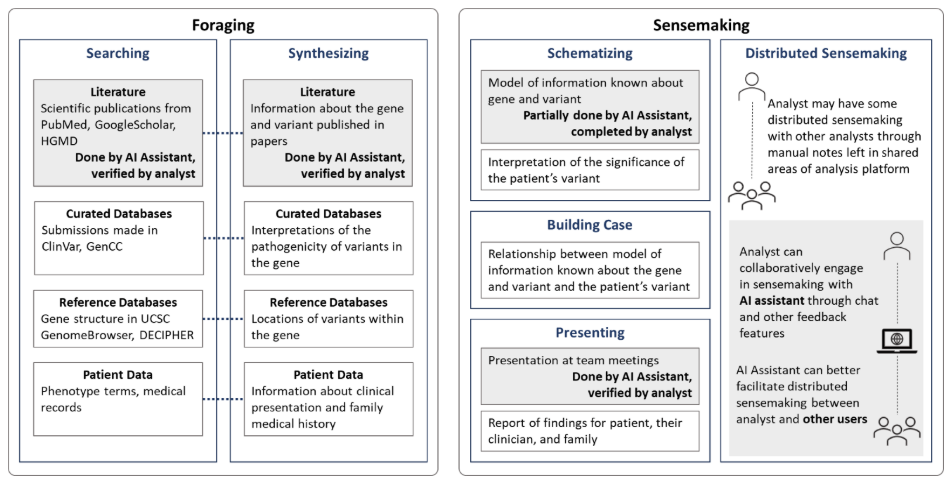Patients with rare genetic diseases often endure years of uncertainty before reaching a diagnosis. Genetic professionals face an overwhelming challenge of analyzing massive datasets and navigating fragmented information sources. Despite advanced tools, fewer than half of initial cases receive a diagnosis, and reanalysis can be slow and inefficient. The call for innovation in this space is louder than ever.
The Complexities of Whole Genome Sequencing
Whole genome sequencing is vital for uncovering genetic causes of rare diseases, yet each patient’s genome contains over a million variants. Interpreting these results demands filtering, prioritizing, and synthesizing data - a process known as sensemaking.
Tools like seqr help, but analysts still grapple with information overload, leading to lengthy diagnostic journeys and a backlog of unsolved cases. The constant influx of new research adds another layer of complexity, making it easy to overlook breakthroughs that could provide answers.
AI-Enhanced Sensemaking: Exploring the Design of a Generative AI-Based Assistant to Support Genetic Professionals. (2025, Paper IMB)
AI’s Potential and Its Limitations In Genomics
Generative AI is often touted as a solution, but many projects fail to make an impact because they are not tailored to real-world needs. For AI to be effective in genomics, it must support the unique workflows of genetic professionals. Critical questions include which tasks AI should target, how much to automate versus augment, and how to keep human expertise at the center of decision-making.
Partnering with Genetics Experts to Build Better AI
Microsoft Research, Drexel University, and the Broad Institute took a collaborative approach, engaging 17 genetics professionals in interviews and design workshops. They uncovered three main challenges:
- Information Overload: Managing and synthesizing vast datasets increases the risk of errors.
- Inefficient Sharing: Collaborating and sharing findings is slow, often relying on outdated methods.
- Reanalysis Prioritization: Keeping pace with scientific developments and knowing when to revisit cases is a persistent struggle.
Through co-design, two impactful AI applications emerged: automatically flagging unsolved cases for reanalysis as new evidence appears, and generating up-to-date summaries of gene and variant information from the latest literature. Experts emphasized the need for AI to provide both comprehensive and selective support, enabling flexible exploration and fostering peer collaboration and review.
Principles for Effective AI-Human Collaboration
Three key design principles surfaced:
- Distributed Sensemaking: AI-created summaries or flagged cases must be shareable, editable, and transparent, building trust through peer feedback and visible revision histories.
- Continuous, Reflective Support: AI should assist both during initial analysis and in ongoing reexamination, helping users track previous rationales and make informed updates.
- Multimodal Evidence Integration: Effective genetic analysis requires synthesizing text, images, and other data types, a task well-suited to advanced AI models.
Prototype: A Human-in-the-Loop AI Assistant
The research team developed an AI assistant prototype that puts human expertise first. The tool helps analysts search, filter, and synthesize information, but always leaves the final call to the professional. Features include automatic flagging for reanalysis and up-to-date, collaborative workspaces for aggregating new research, all designed to be editable and trackable by teams.

Figure: Sensemaking process when interpreting variants with the introduction of prototype AI assistant. Gray boxes represent sensemaking activities which are currently performed by an analyst but are human-in-the-loop processes with involvement of our prototype AI assistant. Non-gray boxes represent activities reserved for analyst completion without assistance by our AI assistant prototype. Within the foraging searching and synthesizing processes, examples of data sources and data types for each, respectively, are connected by dotted lines. Credit: IBM Research
The Road Ahead: Advancing Science Through Collaboration
This research highlights the importance of ongoing collaboration between AI developers, geneticists, designers, and human-computer interaction experts. The next steps involve rigorous user testing to ensure the AI assistant delivers real-world value. Ultimately, the future of rare disease diagnosis depends on building domain-specific, trustworthy AI tools that empower experts and improve patient care.

AI Is Transforming Rare Disease Diagnosis: Insights from Microsoft Research